Micro-scale Flood Hazard Assessment Based on Catastrophe Theory and an Integrated 2-D Hydraulic Model: A Case Study of Gongshuangcha Detention Basin in Dongting Lake Area, China
Abstract
1. Introduction
2. Study Area and LiDAR Data
2.1. Study Area
2.2. LiDAR Data
3. Two-dimensional (2-D) Hydraulic Model
3.1. Basic Control Equation
3.2. Discrete Equations
3.3. Boundary Conditions
3.4. Equation Solutions
4. Method Development
4.1. Catastrophe Progression Method
4.2. Selection and Normalization of FHR Indicators
4.3. Calculating Catastrophe Level Based on FHR Indicators
4.4. Generation of Comprehensive FHR Maps
5. Discussion
6. Conclusions
Author Contributions
Funding
Acknowledgments
Conflicts of Interest
References
- Opolot, E. Application of remote sensing and geographical information systems in flood management: A review. Res. J. Appl. Sci. Eng. Techol. 2013, 6, 1884–1894. [Google Scholar] [CrossRef]
- Bronstert, A. Floods and climate change: Interactions and impacts. Risk Anal. 2003, 23, 545–557. [Google Scholar] [CrossRef] [PubMed]
- Birkholz, S.; Muro, M.; Jeffrey, P.; Smith, H.M. Rethinking the relationship between flood risk perception and flood management. Sci. Total Environ. 2014, 478, 12–20. [Google Scholar] [CrossRef] [PubMed]
- Balica, S.F.; Popescu, I.; Beevers, L.; Wright, N.G. Parametric and physically based modelling techniques for flood risk and vulnerability assessment: A comparison. Environ. Model. Softw. 2013, 41, 84–92. [Google Scholar] [CrossRef]
- Kalyanapu, A.J.; Judi, D.R.; McPherson, T.N.; Burian, S.J. Mote Carlo-based flood modelling framework for estimating probability weighted flood risk. J. Flood Risk Manag. 2012, 5, 37–48. [Google Scholar] [CrossRef]
- Masood, M.; Takeuchi, K. Assessment of flood hazard, vulnerability and risk of mid-eastern Dhaka using DEM and 1D hydrodynamic model. Nat. Hazards 2012, 61, 757–770. [Google Scholar] [CrossRef]
- Falter, D.; Vorogushyn, S.; Lhomme, J.; Apel, H.; Gouldby, B.; Merz, B. Hydraulic model evaluation for large-scale flood risk assessments. Hydrol. Process. 2013, 27, 1331–1340. [Google Scholar] [CrossRef]
- Schober, B.; Hauer, C.; Habersack, H. A novel assessment of the role of Danuhe floodplains in flood hazard reduction (FEM method). Nat. Hazards 2015, 75, 33–50. [Google Scholar] [CrossRef]
- Samantaray, D.; Chatterjee, C.; Singh, R.; Gupta, P.K.; Panigrahy, S. Flood risk modeling for optimal rice planning for delta region of Mahanadi river basin in India. Nat. Hazards 2015, 76, 347–372. [Google Scholar] [CrossRef]
- Balica, S.F.; Douben, N.; Wright, N.G. Flood vulnerability indices at varying spatial scales. Water Sci. Technol. J. 2009, 60, 2571–2580. [Google Scholar] [CrossRef]
- Balica, S.F.; Wright, N.G. Reducing the complexity of flood vulnerability index. Environ. Hazard J. 2010, 9, 321–339. [Google Scholar] [CrossRef]
- Zou, Q.; Zhou, J.; Zhou, C.; Song, L.; Guo, J. Comprehensive flood risk assessment based on set pair analysis-bariable fuzzy sets model and fuzzy AHP. Stoch. Environ. Res. Risk Assess. 2013, 27, 525–546. [Google Scholar] [CrossRef]
- Wang, Y.; Li, Z.; Tang, Z.; Zeng, G. A GIS-based spatial multi-criteria approach for flood risk assessment in the dongting lake region, hunan, central China. Water Resour. Manag. 2011, 25, 3465–3484. [Google Scholar] [CrossRef]
- Lei, X.; Qiao, Z.; Zhou, A.; Huo, R. Assessment of flood catastrophe risk for grain production at the provincial scale in China based on the BMM method. J. Integr. Agric. 2013, 12, 2310–2320. [Google Scholar]
- Tehrany, M.S.; Pradhan, B.; Jebur, M.N. Spatial prediction of flood susceptible areas using rule based decision tree (DT) and a novel ensemble bivariate and multivariate statistical models in GIS. J. Hydrol. 2013, 504, 69–79. [Google Scholar] [CrossRef]
- Garrote, L.; Bras, R.L. A distributed model for real-time flood forecasting using digital elevation models. J. Hydrol. 1995, 167, 279–306. [Google Scholar] [CrossRef]
- Raber, G.T.; Jensen, J.R.; Hodgson, M.E.; Tullis, J.A.; Davis, B.A.; Berglund, J. Impact of lidar nominal post-spacing on DEM accuracy and flood zone delineation. Photogramm. Eng. Remote Sens. 2007, 73, 793–804. [Google Scholar] [CrossRef]
- Sanders, B.F. Evaluation of on-line DEMs for flood inundation modeling. Adv. Water Resour. 2007, 30, 1831–1843. [Google Scholar] [CrossRef]
- Fewtrell, T.J.; Duncan, A.; Sampson, C.C.; Neal, J.C.; Bates, P.D. Benchmarking urban flood models of varying complexity and scale using high resolution terrestrial LiDAR data. Phys. Chem. Earth 2011, 36, 281–291. [Google Scholar] [CrossRef]
- Sampson, C.C.; Fewtrell, T.J.; Duncan, A.; Shaad, K.; Horrit, M.S.; Bates, P.D. Use of terrestrial laser data to drive decimetric resolution urban inundation models. Adv. Water Resour. 2012, 14, 1–17. [Google Scholar] [CrossRef]
- Meesuk, V.; Vojinovic, Z.; Mynett, A.E.; Abdullah, A.F. Urban flood modelling combining top-view LiDAR data with ground-view SfM observations. Adv. Water Resour. 2015, 75, 105–117. [Google Scholar] [CrossRef]
- Webster, T.L. Flood risk mapping using LiDAR for annapolis royal, nova scotia, Canada. Remote Sens. 2010, 2, 2060–2082. [Google Scholar] [CrossRef]
- Mongkonkerd, S.; Hirunsalee, S.; Kanegae, H.; Denpaiboon, C. Comparison of direct monetary flood damage in 2011 to pillar house and non-pillar house in Ayutthaya, Thailand. Procedia Environ. Sci. 2013, 17, 327–336. [Google Scholar] [CrossRef][Green Version]
- Shen, D.; Qian, T.; Chen, W.; Chi, Y.; Wang, J. A quantitative flood-related building damage evaluation method using airborne LiDAR data and 2-D hydraulic model. Water 2019, 11, 987. [Google Scholar] [CrossRef]
- Ernst, J.; Dewals, B.J.; Detrembleur, D.S.; Archambeau, P.; Erpicum, S.; Pirotton, M. Micro-scale flood rsik analysis based on detailed 2D hydraulic modeling and high resolution geographic data. Nat. Hazards 2010, 55, 181–209. [Google Scholar] [CrossRef]
- Dottori, F.; Di Baldassarre, G.; Todini, E. Detailed data is welcome, but with a pinch of salt: Accuracy, precision, and uncertainty in flood inundation modeling. Water Resour. Res. 2013, 49, 6079–6085. [Google Scholar] [CrossRef]
- Costabile, P.; Macchione, F. Enhancing river model set-up for 2-D dynamic flood modelling. Environ. Model. Softw. 2015, 67, 89–107. [Google Scholar] [CrossRef]
- Chen, H.; Ito, Y.; Sawamukai, M.; Tokunaga, T. Flood hazard assessment in the kujukuri plain of chiba prefecture, Japan, based on GIS and multicriteria decision analysis. Nat. Hazards 2015, 78, 105–120. [Google Scholar] [CrossRef]
- Papaioannou, G.; Vasiliades, L.; Loukas, A. Multi-criteria analysis framework for potential flood prone areas mapping. Water Resour. Manag. 2015, 29, 399–418. [Google Scholar] [CrossRef]
- Xiao, Y.; Yi, S.; Tang, Z. Integrated flood hazard assessment based on spatial ordered weighted averaging method considering spatial heterogeneity of risk preference. Sci. Total Environ. 2017, 599–600, 1034–1046. [Google Scholar] [CrossRef]
- Liang, Q.; Borthwick, A.G.L. Adaptive quadtree simulation of shallow flows with wet–dry fronts over complex topography. Comput. Fluids 2009, 38, 221–234. [Google Scholar] [CrossRef]
- Wang, Y.; Liang, Q.; Kresserwani, G.; Hall, J.W. A 2D shallow flow model for practical dam-break simulations. J. Hydraul. Res. 2011, 49, 307–316. [Google Scholar] [CrossRef]
- Thom, R. Catastrophe Theory: Its present state and future perspectives. In Dynamical Systems-Warwick 1974; Springer: Berlin/Heidelberg, Germany, 1975. [Google Scholar]
- Zeeman, E.C. Catastrophe Theory: Selected Papers (1972~1977); Addson-Wesley: Boston, MA, USA, 1977. [Google Scholar]
- Lai, C.; Chen, X.; Chen, X.; Wang, Z.; Wu, X.; Zhao, S. A fuzzy comprehensive evaluation model for flood risk based on the combination weight of game theory. Nat. Hazards 2015, 77, 1243–1259. [Google Scholar] [CrossRef]
- Gao, S.; Sun, H.; Zhao, L.; Wang, R.; Xu, M.; Cao, G. Dynamic assenssment of island ecological environment sustainability under urbanization based on rough set, synthetic index and catastrophy progression analysis theories. Ocean Coast. Manag. 2019, 178, 104790. [Google Scholar] [CrossRef]
- Chen, Y.; Zhang, S.; Zhang, Y.; Liu, L.; Qu, Z.; Song, G.; Zhang, J. Comprehensive assessment and hierarchical management of the sustainable utilization of urban water resources based on catastrophe theory. J. Taiwan Inst. Chem. Eng. 2016, 60, 430–437. [Google Scholar] [CrossRef]
- Wang, W.; Liu, S.; Zhang, S.; Chen, J. Assessment of a model of pollution disaster in near-shore coastal waters based on catastrophe theory. Ecol. Model. 2011, 222, 307–312. [Google Scholar] [CrossRef]
- Liu, Y.B.; De Smedt, F. Flood modeling for complex terrain using GIS and remote sensed information. Water Resour. Manag. 2005, 19, 605–624. [Google Scholar] [CrossRef]
- Kia, M.B.; Pirasteh, S.; Pradhan, B.; Mahmud, A.R.; Sulaiman, W.N.A.; Moradi, A. An artificial neural network model for flood simulation using GIS: Johor River Basin, Malaysia. Environ. Earth Sci. 2012, 67, 251–264. [Google Scholar] [CrossRef]
- Shen, D.; Wang, J.; Cheng, X.; Rui, Y.; Ye, S. Integration of 2-D hydraulic model and high-resolution lidar-derived DEM for floodplain flow modeling. Hydrol. Earth Syst. Sci. 2015, 19, 3605–3616. [Google Scholar] [CrossRef]
- Pradhan, B. Flood susceptible mapping and risk area delineation using logistic regression, GIS and remote sensing. J. Spat. Hydrol. 2010, 9, 1–18. [Google Scholar]
- Qian, T.; Shen, D.; Xi, C.; Chen, J.; Wang, J. Extracting Farmland Features from Lidar-Derived DEM for Improving Flood Plain Delineation. Water 2018, 10, 252. [Google Scholar] [CrossRef]
- Glenn, E.; Morino, K.; Nagler, P.; Murray, R.; Pearlstein, S.; Hultine, K. Roles of saltcedar (Tamarix spp.) and capillary rise in salinizing a non-flooding terrace on a flow-regulated desert river. J. Arid Environ. 2012, 79, 56–65. [Google Scholar] [CrossRef]
- Tehrany, M.S.; Pradhan, B.; Jebur, M.N. Flood susceptibility mapping using a novel ensemble weights-of-evidence and support vector machine medels in GIS. J. Hydrol. 2014, 512, 332–343. [Google Scholar] [CrossRef]
- Chen, Y.; Liu, R.; Barrett, D.; Gao, L.; Zhou, M.; Renzullo, L.; Emelyanova, I. A Spatial assessment framework for evaluating flood risk under extreme climates. Sci. Total Environ. 2015, 538, 512–523. [Google Scholar] [CrossRef]
- Yang, H.; Chen, W.; Qian, T.; Shen, D.; Wang, J. The extraction of vegetation points from LiDAR using 3D fractal dimension analyses. Remote Sens. 2015, 7, 10815–10831. [Google Scholar] [CrossRef]
- Silva, S.F.; Martinho, M.; Capitao, R.; Reis, T.; Fortes, C.J.; Ferreira, J.C. An index-based method for coastal-flood risk assenssment in low-lying area (Costa de Caparica, Portugal). Ocean Coast. Manag. 2017, 144, 90–104. [Google Scholar] [CrossRef]

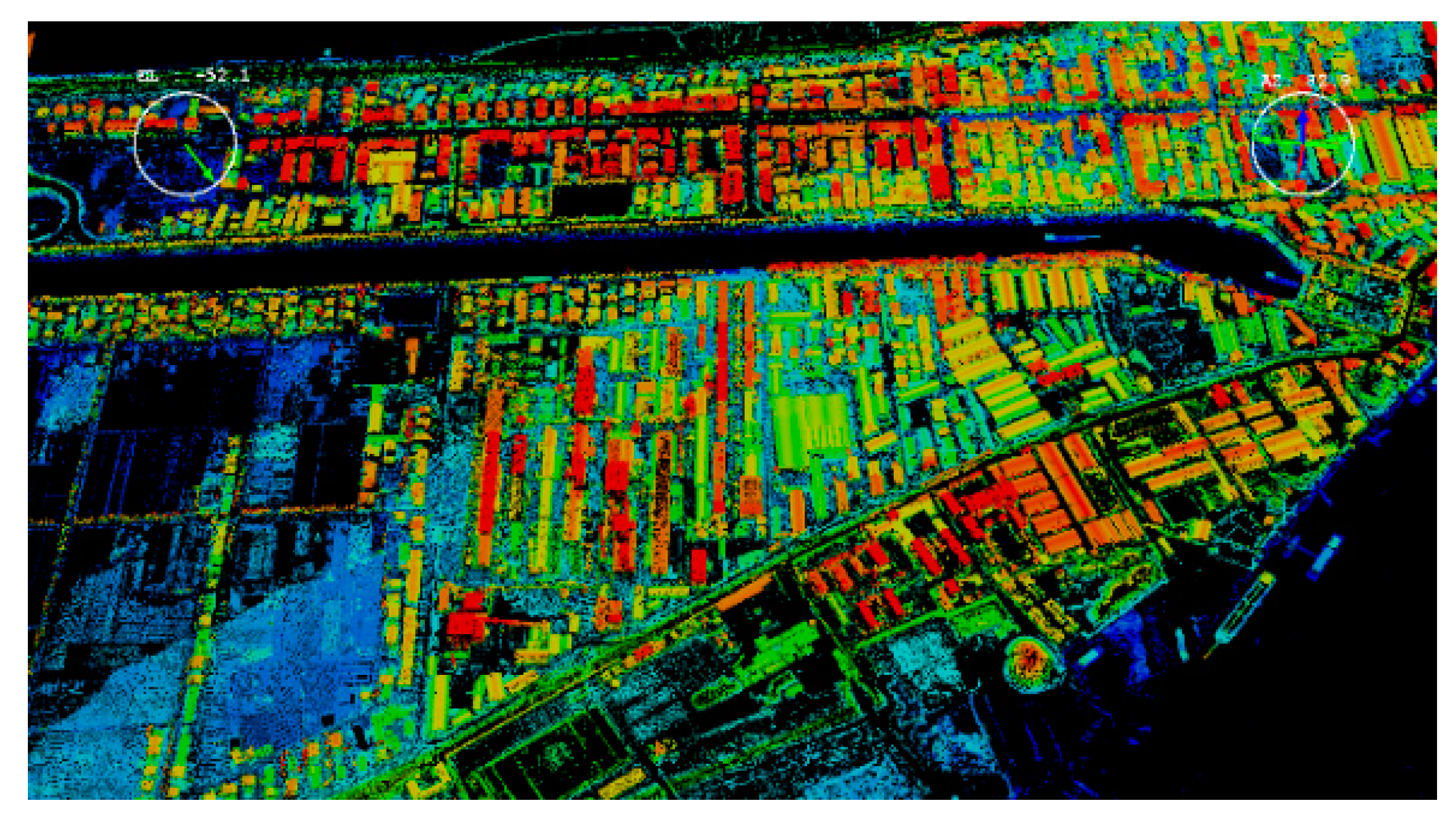
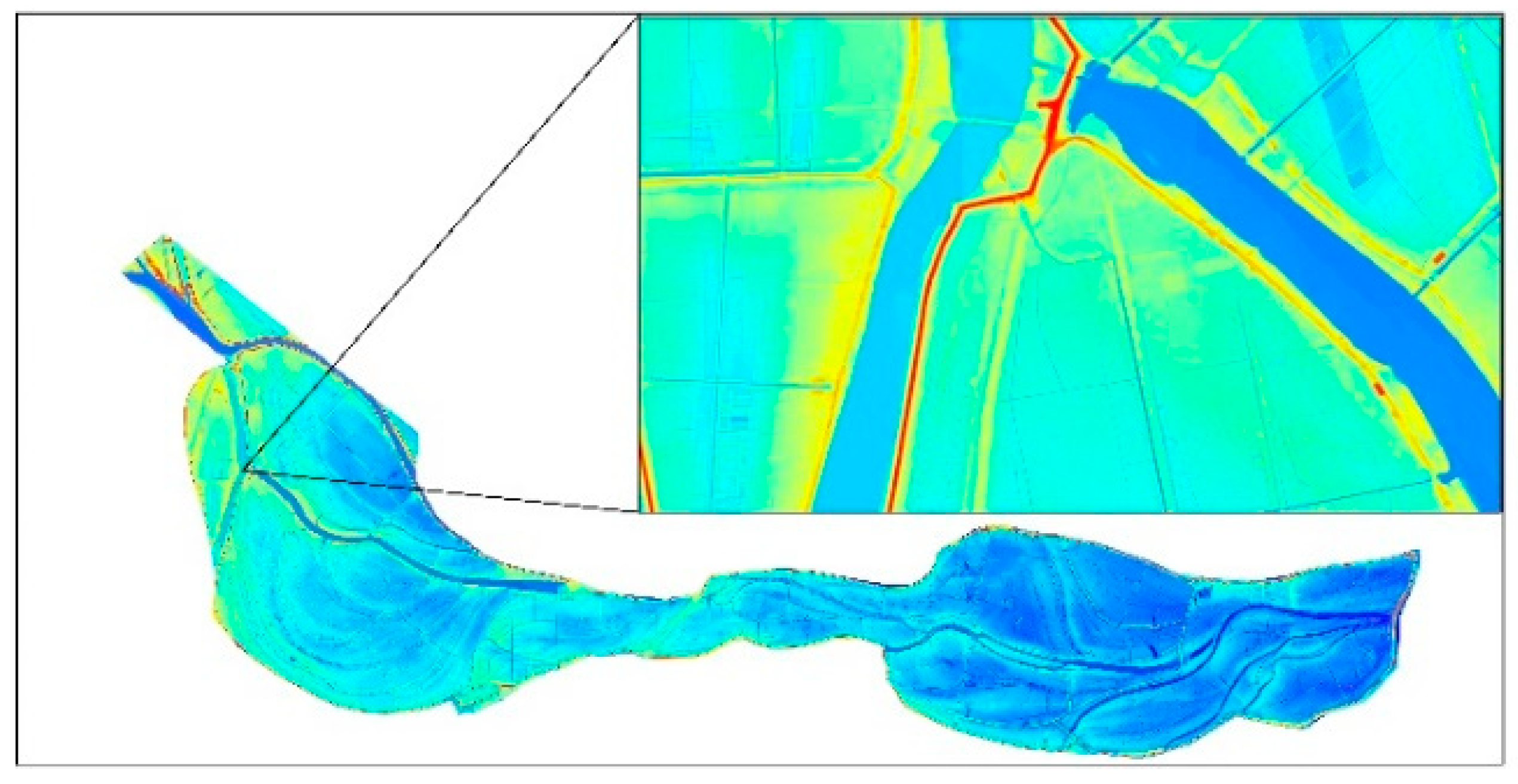
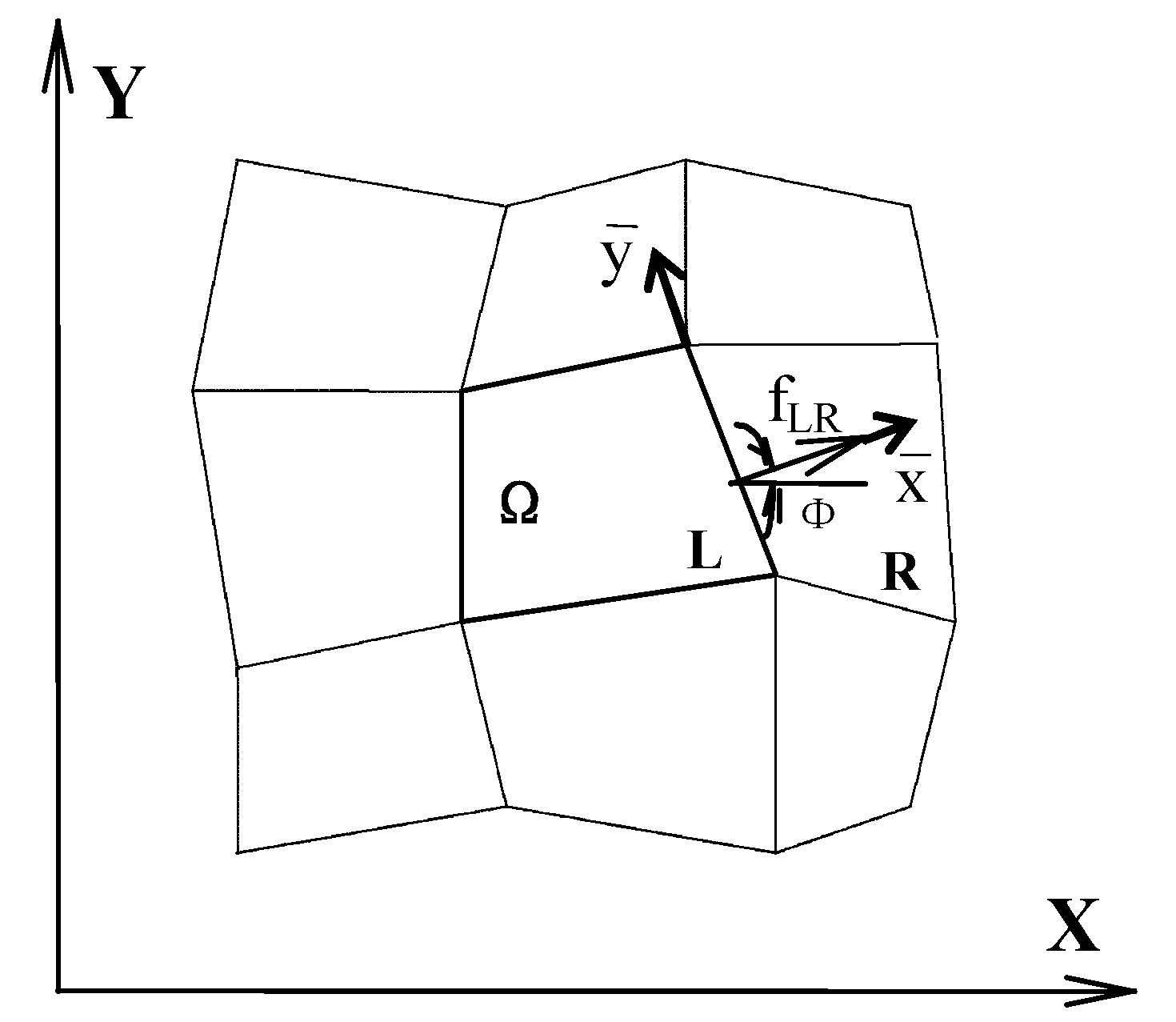

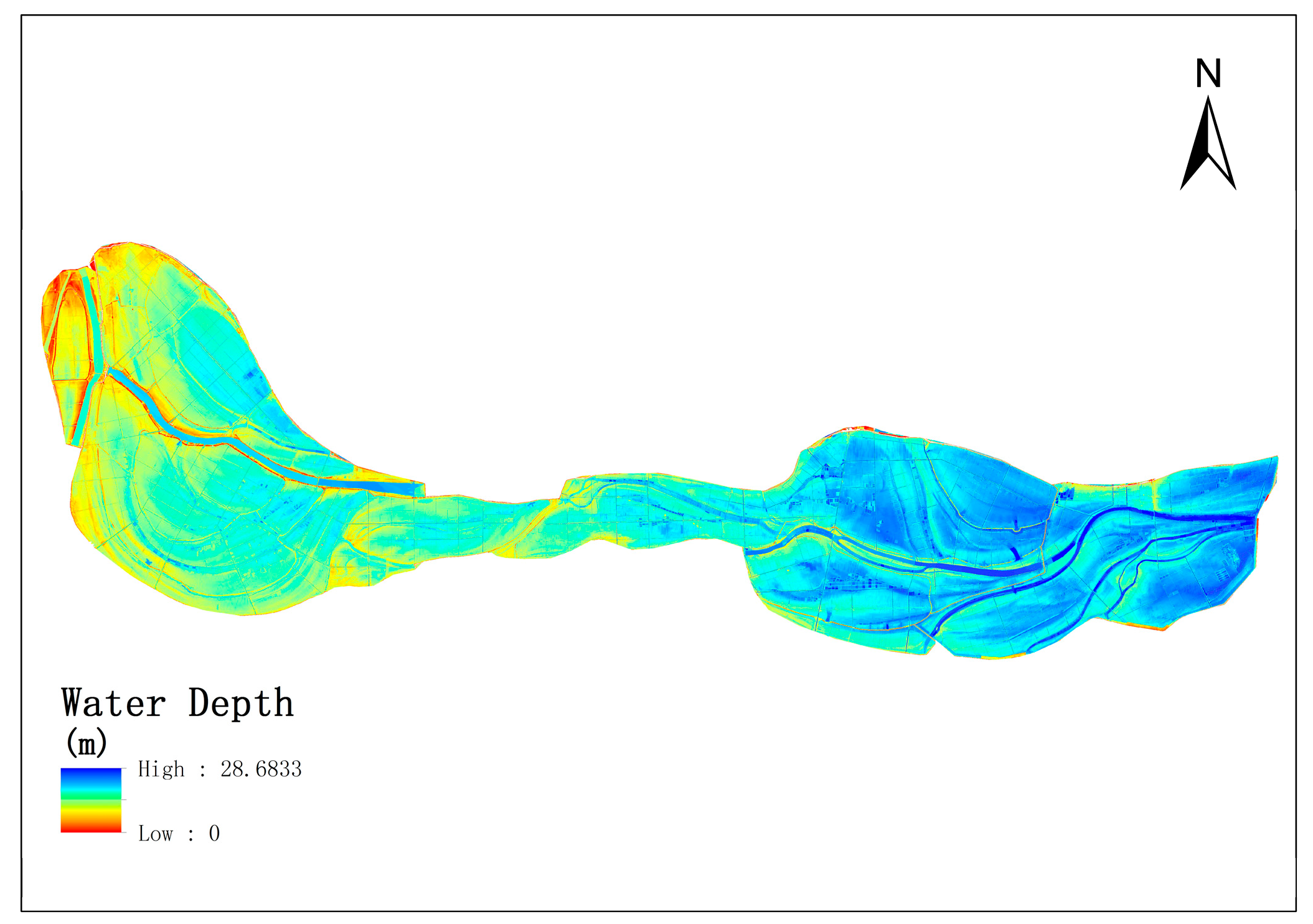


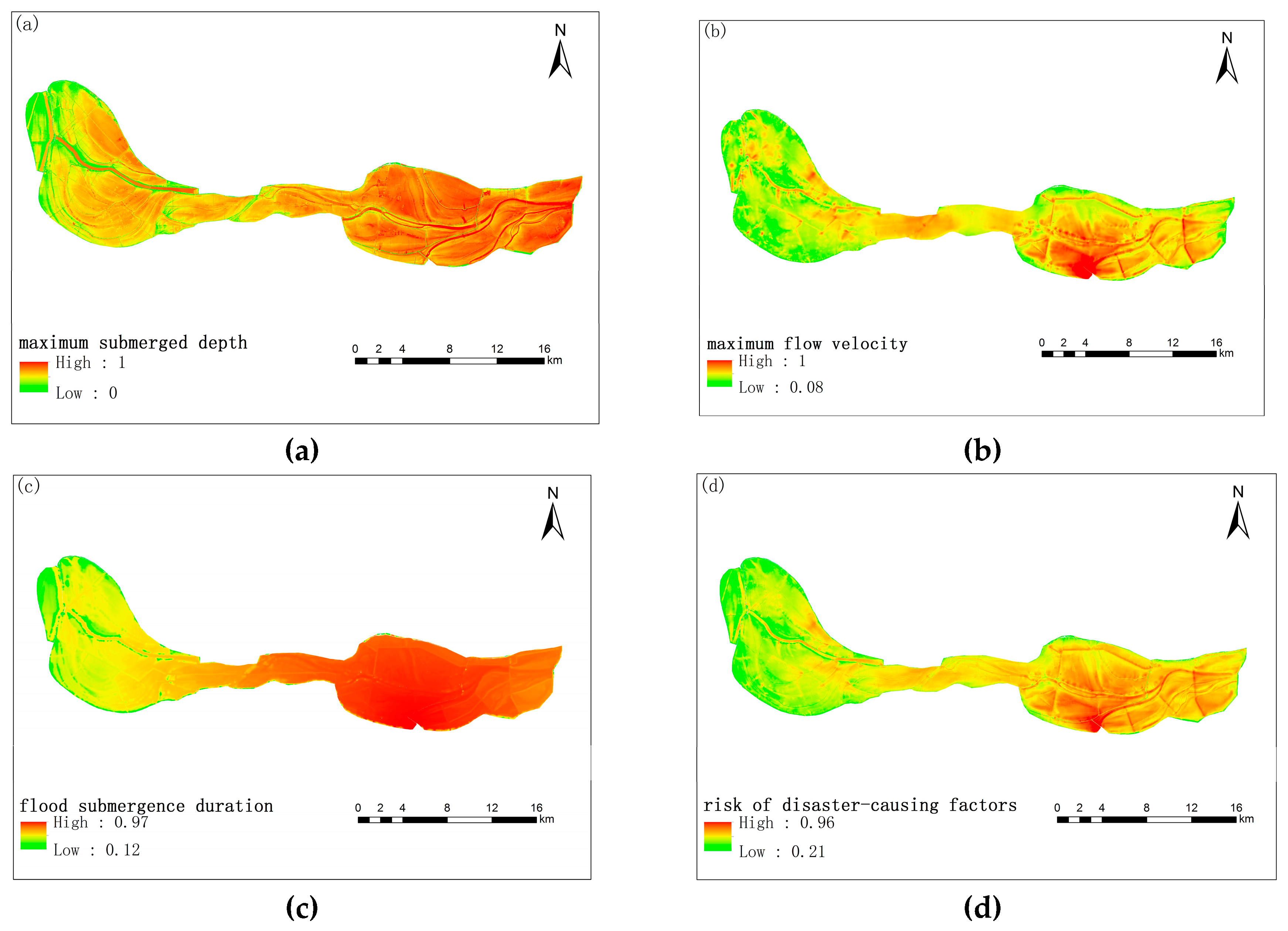


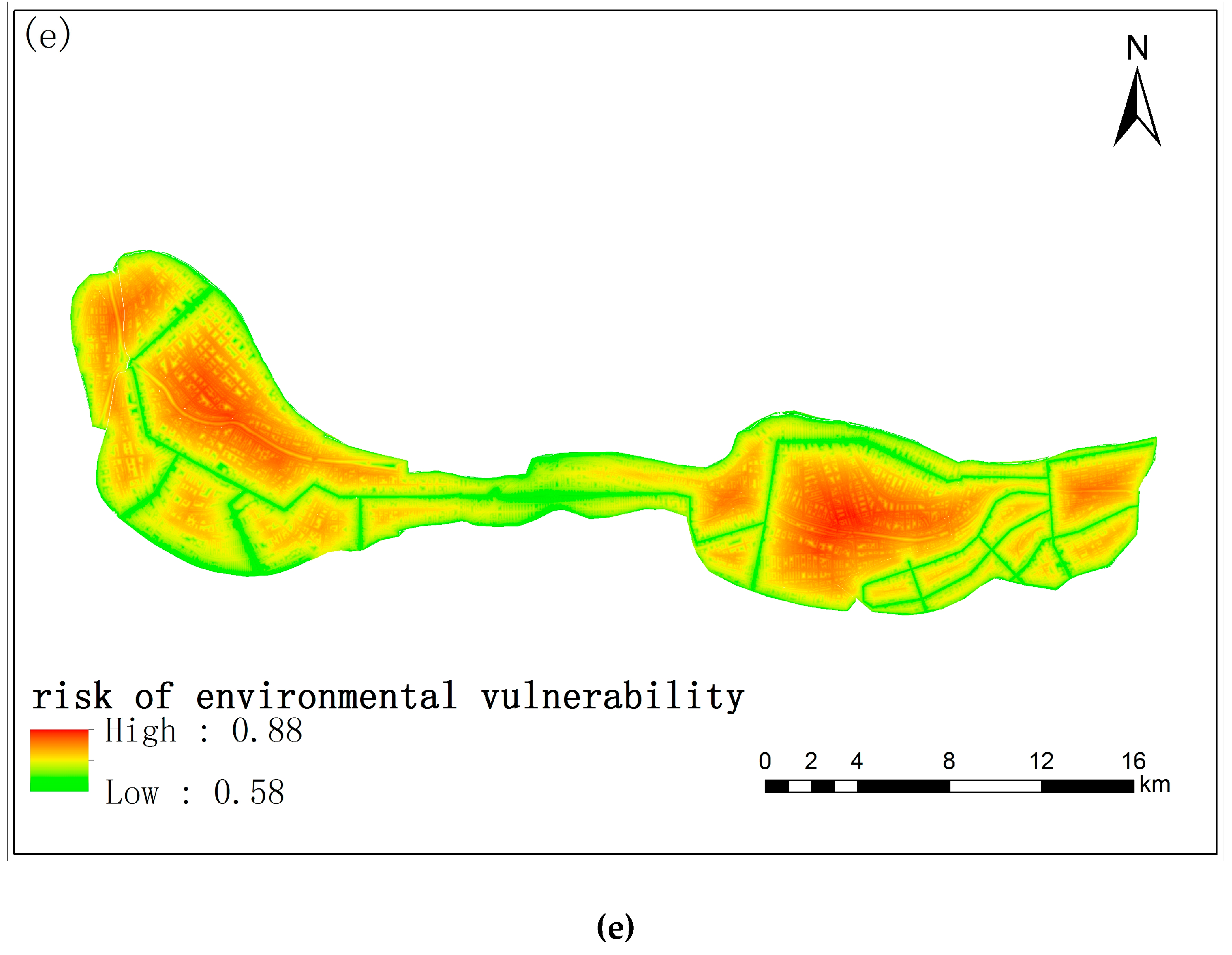
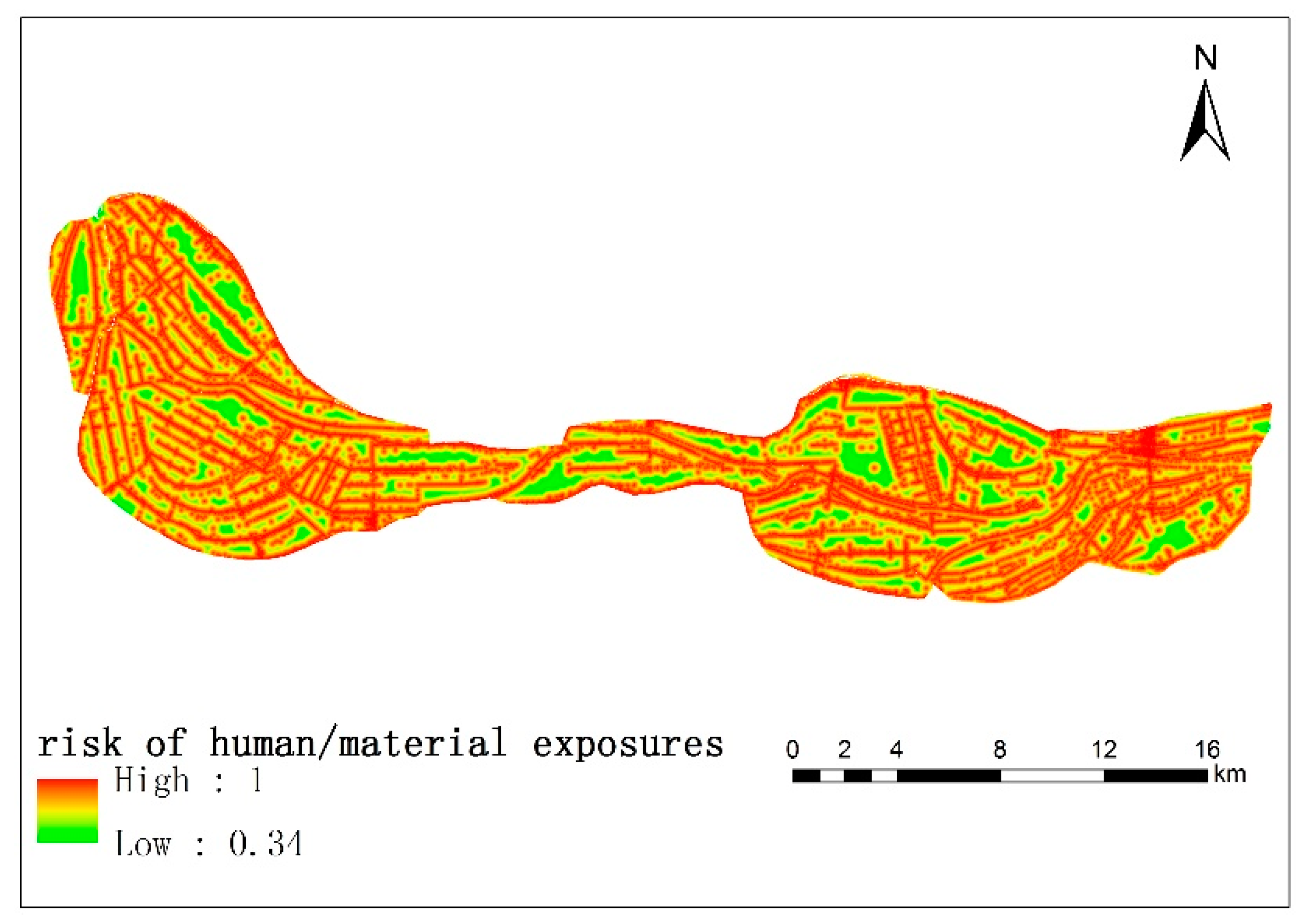

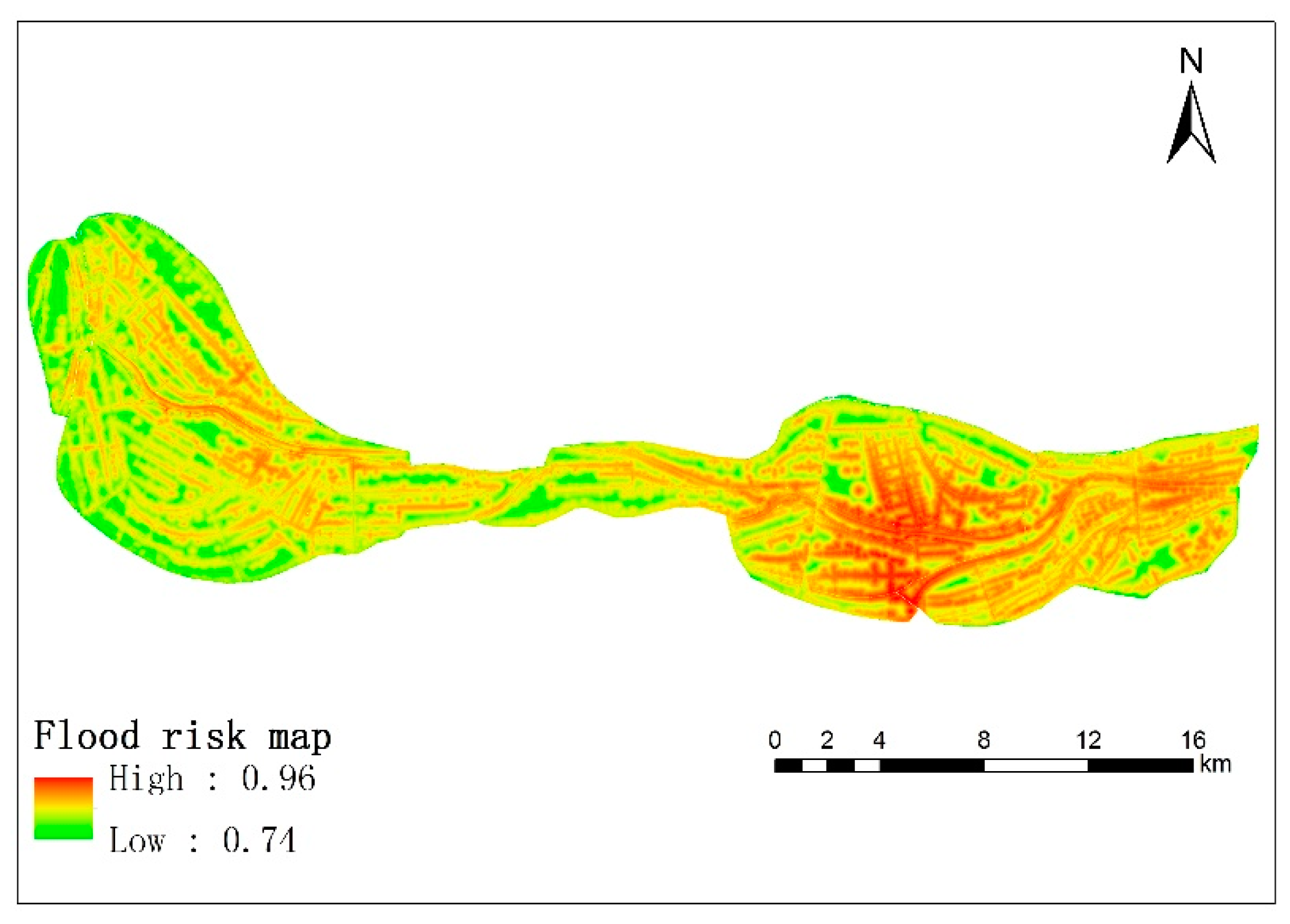


| Catastrophe Type | No. of Variable(s) | Potential Function | |
|---|---|---|---|
| State | Control | ||
| Fold | 1 | 1 | |
| Cusp | 1 | 2 | |
| Swallowtail | 1 | 3 | |
| Butterfly | 1 | 4 | |
| Hyperbolic umbilic | 2 | 3 | |
| Elliptic umbilic | 2 | 3 | |
| Parabolic umbilic | 2 | 4 | |
| FHR Level | I | II | III | IV | V | Notes for Indicator Values | |
|---|---|---|---|---|---|---|---|
| Indicator values | [0, 0.2] | [0.2, 0.4] | [0.4, 0.6] | [0.6, 0.8] | [0.8, 1.0] | ||
| (1) | Maximum flood submerged depth | 0.0–0.5 | 0.5–1.5 | 1.5–3.0 | 3–5 | 5–8 | If > 8 m, = 1 |
| (2) | Maximum flow velocity | 0.0–0.3 | 0.3–0.7 | 0.7–1.2 | 1.2–1.8 | 1.8–2.5 | If > 2.5 m/s, = 1 |
| (3) | Flood submergence duration | 0–12 | 12–24 | 24–48 | 48–72 | 72–120 | If > 120 h, = 1 |
| (4) | DEM | 60–40 | 40–20 | 20–10 | 10–5 | 5–0 | If > 60 m, = 0 |
| (5) | Ditches | 300–200 | 200–150 | 150–100 | 100–50 | 50–0 | If > 300 m, = 0 |
| (6) | River systems | 1000–800 | 800–600 | 600–400 | 400–200 | 200–0 | If > 1000 m, = 0 |
| (7) | Road networks | 0–800 | 800–1600 | 1600–2400 | 2400–200 | 3200–4000 | If > 4000 m, = 1 |
| (8) | Buildings | 1000–800 | 800–600 | 600–00 | 400–200 | 200–0 | If > 1000 m, = 0 |
© 2020 by the authors. Licensee MDPI, Basel, Switzerland. This article is an open access article distributed under the terms and conditions of the Creative Commons Attribution (CC BY) license (http://creativecommons.org/licenses/by/4.0/).
Share and Cite
Shen, D.; Qian, T.; Xia, Y.; Zhang, Y.; Wang, J. Micro-scale Flood Hazard Assessment Based on Catastrophe Theory and an Integrated 2-D Hydraulic Model: A Case Study of Gongshuangcha Detention Basin in Dongting Lake Area, China. ISPRS Int. J. Geo-Inf. 2020, 9, 206. https://doi.org/10.3390/ijgi9040206
Shen D, Qian T, Xia Y, Zhang Y, Wang J. Micro-scale Flood Hazard Assessment Based on Catastrophe Theory and an Integrated 2-D Hydraulic Model: A Case Study of Gongshuangcha Detention Basin in Dongting Lake Area, China. ISPRS International Journal of Geo-Information. 2020; 9(4):206. https://doi.org/10.3390/ijgi9040206
Chicago/Turabian StyleShen, Dingtao, Tianlu Qian, Yu Xia, Yu Zhang, and Jiechen Wang. 2020. "Micro-scale Flood Hazard Assessment Based on Catastrophe Theory and an Integrated 2-D Hydraulic Model: A Case Study of Gongshuangcha Detention Basin in Dongting Lake Area, China" ISPRS International Journal of Geo-Information 9, no. 4: 206. https://doi.org/10.3390/ijgi9040206
APA StyleShen, D., Qian, T., Xia, Y., Zhang, Y., & Wang, J. (2020). Micro-scale Flood Hazard Assessment Based on Catastrophe Theory and an Integrated 2-D Hydraulic Model: A Case Study of Gongshuangcha Detention Basin in Dongting Lake Area, China. ISPRS International Journal of Geo-Information, 9(4), 206. https://doi.org/10.3390/ijgi9040206




